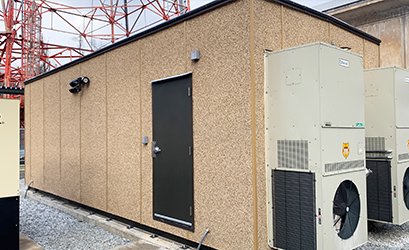
What is the Metaverse?
The mere mention of the term metaverse in conversations or trade and consumer publications elicits a broad range of definitions, assumptions and predictions as well as head scratching and skepticism. And yet major technology companies and organizations across many industry sectors are pouring billions of dollars into hardware, software and network infrastructure to actualize a concept that doesn’t yet truly exist in a full-fledged, ready-to-roll technology.
The term “metaverse” isn’t new. What is new is that major companies – Meta, Microsoft, NVIDIA and others – have made commitments to bringing it into the mainstream as a substantial evolution of and improvement over the internet. They see it as a game-changer that employs virtual reality (VR) and augmented reality (AR) to enhance productivity, interactive learning, e-commerce and entertainment through immersive experiences.
Suffice to say, however, that although you can walk into your local consumer electronics store and buy a virtual reality headset and a VR gaming system, that hardly means the metaverse has arrived.
A Pew Research Center article queried hundreds of technology experts about the metaverse and received a slew of responses on the subject ranging from its ultimate feasibility and utility to comments on the amount of work that will be required – particularly infrastructure work – to fulfill the promises many developers and companies envision.
Consider just a couple:
“Even the smartest folks today have difficulty articulating the metaverse so that regular people understand it beyond it being this vague thing emerging out of augmented reality, virtual reality, 3D and mixed reality. Whatever it is that draws all of us into the metaverse, it must provide – or at least promise to provide – experiences and benefits that are otherwise impractical if not impossible to achieve in (for lack of a better way of putting it) the real world.”1
- Edward Baig, Technology Reporter, USA Today
“By 2040, the internet that you now access on a screen will be a place you can enter, visit and explore. The word website implies a location. Currently this is mostly in 2D. What if these sites are in 3D and you can get in and interact directly, rather than with a keyboard and a mouse? Think how creative people already get with creating and monetizing content on the 2D internet. Now add a third dimension to this and you have just created what Charlie Fink has referred to as the ‘largest wealth-and-value-creation experience humankind has ever witnessed.’ I can’t imagine the momentum heading anywhere else.”1
- Daniel D. Bryant, VR educator and co-founder of Educators in VR and a leader in the Virtual World Society
Building out the infrastructure is the critical Metaverse success factor
Not mentioned in the comments above is the most daunting challenge – building the infrastructure required to reach 20 millisecond latency, the performance required to create an immersive, collaborative platform.
Connecting thousands or millions of people in real-time immersive experiences will require a quantum leap in data center, networking and other crucial, behind-the-scenes technologies.
To date, most developments have focused on the tangible components of the metaverse such as VR headsets, haptic gloves and other wearables. But for users to truly have real-time experiences and to perform real-time business-critical or life-critical tasks across great distances, metaverse visionaries and developers are going to have to build an unprecedented infrastructure.
As Forbes Technology Council Member Steven Carlini puts it, “Of course, we have data centers and networks now, but they lack the speed and capacity for an immersive experience of this magnitude. Additionally, due to the almost zero latency requirement, metaverse data centers will need to be in very close proximity to the user, and network speeds must be blazing fast. For users all over the world to interact, a fleet of decentralized local edge data centers will be essential.”2
According to Carlini, to achieve the sense of “being there,” the graphical elements that make up a virtual world must update rapidly in response to the interactions of the participants. The roundtrip latency must be less than 10 milliseconds, an order of magnitude faster than latency-sensitive applications such as video conferencing and gaming.
Carlini also points out that host data centers will have to contain every environment, object and avatar in the metaverse, and housing all that metaverse data will drive significant power usage. He cites one planned data center designed to handle just a portion of the metaverse in Europe that would have an estimated energy consumption of 1,380 gigawatt-hours per year. 2
The beating heart of the metaverse will be at the edge
The only way to support millions of concurrent metaverse experiences is to create a more robust and distributed networking infrastructure. According to Steve Vondran, Executive Vice President and President of the U.S. Tower Division of American Tower, “The edge is emerging as the critical area of application convergence. By lowering data transport costs with selective IoT edge data processing and achieving bounded latency targeted requirements ranging as low as 10 milliseconds of round-trip latency, solution providers will be able to turn vision into reality. Without reaching that degree of performance, metaverse “experiences” and low-latency sensitive services, driven by artificial intelligence, machine learning, IoT, etc. will fail to perform as needed.”3
We will need an infrastructure in which data can be:
- Processed in an edge data center located at or close to a connectivity access point
- Sent to an aggregation data center, where data from multiple sources in the access layer is amassed and processed in colocation-deployed workloads
- Routed to a regional data center, where traditional colocation services are executed
- Relayed to the core, which includes high-density data centers and data center campuses
- Routed via native cloud onramps to hyperscale CSP facilities for processing in hosted services
And, of course, for metaverse experiences to be “live” and persistent, these processes must be always on and interconnected.
As an aside, CoreSite and American Tower are working to build the low-latency infrastructure Vondran talked about. You can learn about the vision, value proposition and strategy for building the converged network of tomorrow in the white paper, Accelerating Wireless-Wireline Convergence: Enabling the Metaverse, Omniverse and Future Digital Infrastructure.
Discussion includes:
- Tomorrow’s edge-to-cloud interconnection fabric
- 5G-enabled uses cases
- Data center and wireless infrastructure provider roles and requirements

Imagine the explosion of metaverse use cases
Countless use cases will improve our ability to perform even the most complex tasks, across great distances, if and when the metaverse “exists.”
Here are just a few envisioned today.
- Enhanced Field Work Support
Imagine you’re a technician in an oilfield with 5G coverage tasked with inspecting or maintaining equipment on a rig. An AR headset attached to your hard hat would be able to project instructions telling you exactly what to look for. Your colleague back at headquarters, who can see what you see over video, could talk you through the process. Meanwhile, IoT sensors in the system being worked on could provide feedback on process changes or warn you if conditions are unsafe. 5G-enabled AR coupled with IoT could decrease human error – mistakes that could even be deadly. It could also reduce the number of technicians needed for field expeditions, decreasing costs.
- Remote Robotics
Providing healthcare in underserved regions is a crucially important undertaking. But what if the skills of highly specialized physicians could be “transported” to where they’re needed?
AR-based telemedicine and more advanced applications such as telesurgery could solve that problem. Right now, you can schedule a 2D telehealth call through your smartphone or computer with a doctor or nurse, which works fairly well for non-life-threatening diagnoses and treatments. For more complex medical issues, however, by using Microsoft’s HoloLens 2, local physicians and remote, highly qualified specialists can actually collaborate across the globe with the specialists assisting as 3D avatars.
- Mobile Gaming

With the implementation of the infrastructure described earlier, gamers will reap the advantages of network slicing because 5G solves for jitter and especially latency. By using end-to-end network slicing, operators can create a low latency slice for enhanced gaming experiences and another high bandwidth slice for video streaming within the same mobile network. Separate slices allow services to be delivered with the quality of service appropriate for each application and at a price point the market will bear.
All of this and much more will be possible if organizations across the globe commit to putting in the hard work of developing and implementing the distributed and unprecedented edge-to-cloud network infrastructure required to deliver near zero latency immersive experiences.
Read CoreSite’s white paper, Accelerating Wireless-Wireline Convergence: Enabling the Metaverse, Omniverse and Future Digital Infrastructure, to learn what it will take to make the metaverse all it could be.










